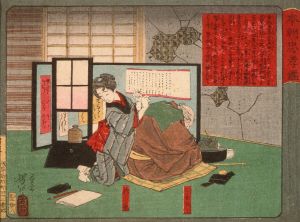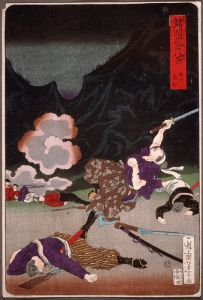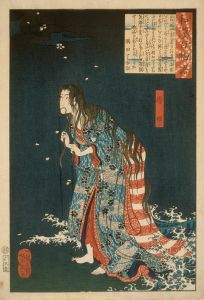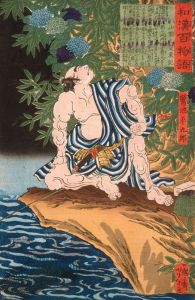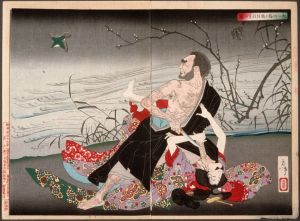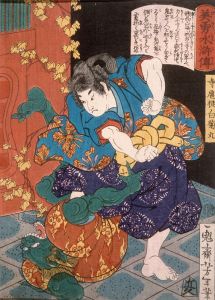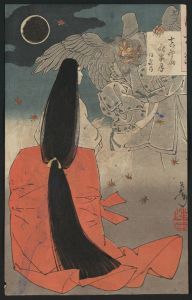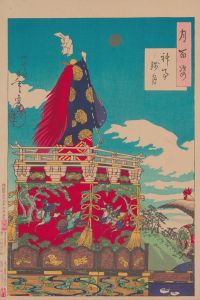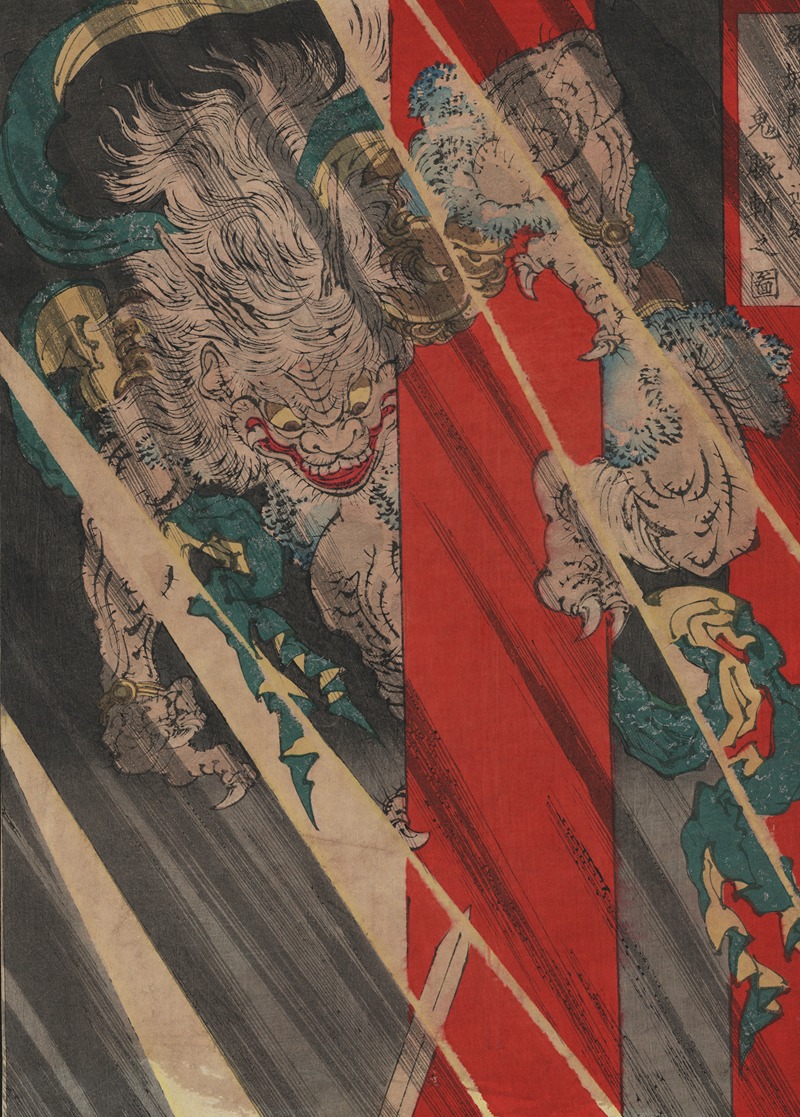
Rajōmon watanabe no tsuna oni ude kiru no zu
A hand-painted replica of Tsukioka Yoshitoshi’s masterpiece Rajōmon watanabe no tsuna oni ude kiru no zu, meticulously crafted by professional artists to capture the true essence of the original. Each piece is created with museum-quality canvas and rare mineral pigments, carefully painted by experienced artists with delicate brushstrokes and rich, layered colors to perfectly recreate the texture of the original artwork. Unlike machine-printed reproductions, this hand-painted version brings the painting to life, infused with the artist’s emotions and skill in every stroke. Whether for personal collection or home decoration, it instantly elevates the artistic atmosphere of any space.
Rajōmon Watanabe no Tsuna Oni Ude Kiru no Zu (The Picture of Watanabe no Tsuna Cutting Off the Arm of the Demon at Rashomon) is a woodblock print created by the renowned Japanese artist Tsukioka Yoshitoshi (1839–1892). This artwork is part of Yoshitoshi's celebrated series Shinkei Sanjūrokkaisen (New Forms of Thirty-Six Ghosts), which was published between 1889 and 1892. The series is notable for its depictions of supernatural themes, folklore, and historical legends from Japanese culture, rendered in Yoshitoshi's distinctive and dramatic style.
The print illustrates a famous episode from Japanese folklore involving the legendary samurai Watanabe no Tsuna, a retainer of the heroic figure Minamoto no Yorimitsu (also known as Raikō). According to the tale, Watanabe no Tsuna was tasked with guarding the Rashomon Gate in Kyoto, a site notorious for its association with demons and other supernatural beings. One night, Tsuna encountered a fearsome oni (demon) at the gate. In a fierce battle, Tsuna managed to sever the demon's arm with his sword. The demon fled, leaving its severed arm behind. Tsuna later brought the arm back to his residence and locked it in a chest for safekeeping. However, the demon eventually returned in disguise to reclaim its lost limb.
Yoshitoshi's print captures the climactic moment of the story, with Watanabe no Tsuna wielding his sword against the demon. The composition is dynamic and intense, showcasing Yoshitoshi's mastery of movement and expression. The demon is depicted with exaggerated, grotesque features, emphasizing its otherworldly nature, while Tsuna is portrayed as a calm and resolute warrior, embodying the ideals of bravery and discipline associated with the samurai class.
This artwork reflects Yoshitoshi's interest in traditional Japanese tales and his ability to reinterpret them through the lens of ukiyo-e, a genre of woodblock prints and paintings that flourished during the Edo period (1603–1868). By the time Yoshitoshi created this piece, ukiyo-e was in decline due to the rise of modern printing technologies and changing tastes in Japan. However, Yoshitoshi's works, including this print, are now regarded as some of the finest examples of late ukiyo-e art, celebrated for their technical excellence and imaginative storytelling.
Today, Rajōmon Watanabe no Tsuna Oni Ude Kiru no Zu is considered an important cultural artifact, reflecting both the artistic innovation of Tsukioka Yoshitoshi and the enduring appeal of Japanese folklore. The print is held in various museum collections and continues to be studied and admired for its historical and artistic significance.





